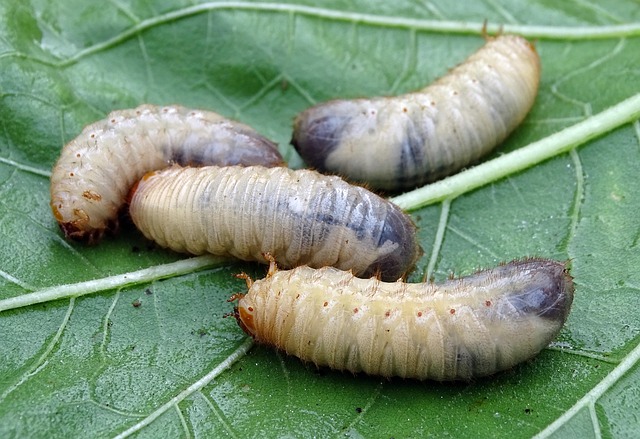Stinging pest infestations pose significant risks to homeowners, requiring swift action from specialized residential stinging pest services. Understanding pest behaviors and types (e.g., bees, wasps, hornets) is crucial for targeted treatments. Chemical options offer quick relief but have drawbacks, while non-chemical methods are eco-friendly but may take longer. Professional services begin with species identification, thorough inspections, and advanced treatment techniques to eliminate nests. Long-term protection involves sealing entry points, regular maintenance, and preventive measures like using pest-repellent plants and professional treatments.
Stinging pests like bees, wasps, and hornets can turn a backyard gathering into a painful experience. Understanding these infestations is the first step towards eliminating them effectively. This article explores both chemical and non-chemical treatments, providing insights into pros and cons for each approach. We delve into targeted residential stinging pest services and offer preventative measures to safeguard your home from future visits. Discover how to reclaim your outdoor spaces with expert strategies tailored to residential stinging pest services.
Understanding Stinging Pest Infestations: Common Types and Behavior
Stinging pest infestations can be a significant nuisance and health hazard for homeowners, requiring prompt action from professional residential stinging pest services. Understanding these pests is crucial to effective elimination. Common types include bees, wasps, and hornets, each with distinct behaviors that influence their nesting habits and interaction with humans. Bees primarily nest in the ground or within wooden structures, while wasps and hornets favor hollow spaces like trees, attics, or wall voids.
Recognizing their behavior patterns is essential for targeted treatment. Some species are more aggressive when protecting their nests, while others remain passive unless provoked. Identifying the specific pest type is key to selecting appropriate control methods, ensuring safety and effectiveness in eliminating these relentless intruders from your living space.
Chemical vs Non-Chemical Treatments: Pros and Cons
When it comes to addressing stinging pest infestations, homeowners often face a choice between chemical and non-chemical treatments. Chemical options, such as those offered by professional residential stinging pest services, provide quick and effective relief by targeting pests directly with powerful repellents or insecticides. The pros include swift results and the ability to eliminate infestations swiftly, making homes more comfortable immediately. However, these methods also come with drawbacks: they can be costly, pose potential health risks to residents, and may have negative environmental impacts if not applied responsibly.
Non-chemical treatments, on the other hand, offer a more eco-friendly and safer approach. These methods include natural repellents, physical barriers, and behavioral modifications. While they might take longer to show results, non-chemical solutions are cost-effective, reduce exposure to harmful substances, and minimize environmental damage. Examples include using essential oils, setting up fine mesh screens, or employing pheromone traps. However, their effectiveness can vary; some pests may not be as responsive, and consistent application is often required to maintain pest-free environments.
Targeted Residential Stinging Pest Services: Strategies for Elimination
When dealing with stinging pest infestations in a residential setting, targeted residential stinging pest services are crucial for effective elimination. The first step involves identifying the specific species infesting your home, as different pests require tailored strategies. Professional pest control experts can conduct thorough inspections to pinpoint nest locations and entry points, enabling them to devise customized plans.
These services employ advanced techniques such as targeted treatments, where pesticides are applied directly to known nest sites and pathways these pests use to enter homes. This method minimizes the risk of exposure to non-target species and reduces environmental impact. Additionally, residential stinging pest services may include installation of physical barriers like screens and traps, ensuring long-term protection by blocking access points and capturing any stray intruders.
Preventive Measures: Safeguarding Your Home from Future Infestations
To prevent future infestations, it’s crucial to implement robust measures that deter stinging pests from invading your home. Residential stinging pest services often recommend sealing entry points such as cracks, gaps around doors and windows, and any other potential weak spots in your home’s exterior. Regular inspections are vital to identify and address any signs of an existing or imminent infestation early on. Maintaining a clean living environment, particularly removing sources of water and food that attract pests, is another effective preventive strategy.
Moreover, using pest-repellent plants around your property, keeping your lawn well-maintained, and storing seasonal items like clothing or furniture in airtight containers can significantly reduce the likelihood of stinging pest infestations. Regular professional treatments, tailored to the specific needs and risks associated with your location, also play a crucial role in safeguarding your home from these persistent intruders.
In conclusion, effective management of stinging pest infestations involves a combination of understanding their behavior, choosing between chemical and non-chemical treatments, employing targeted residential stinging pest services, and taking preventive measures. By navigating these strategies, homeowners can safeguard their properties from these pesky intruders, ensuring a peaceful and comfortable living environment. Remember that, in the world of pest control, professional residential stinging pest services stand as a game changer, offering tailored solutions for lasting protection.
